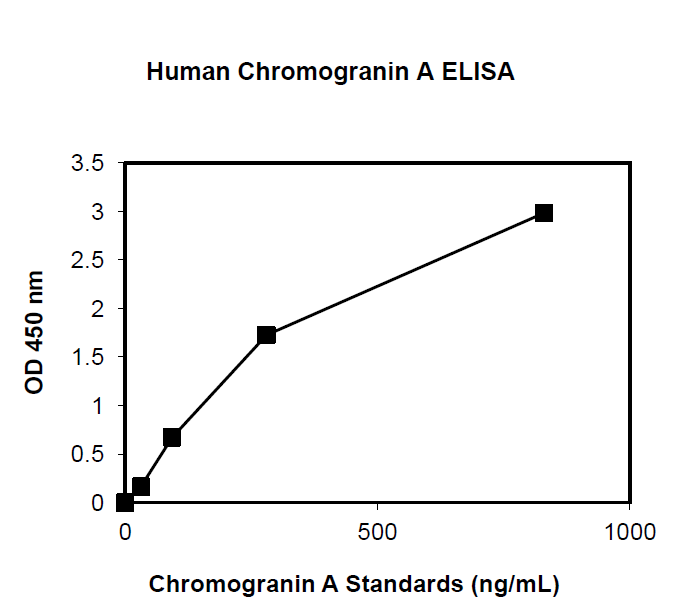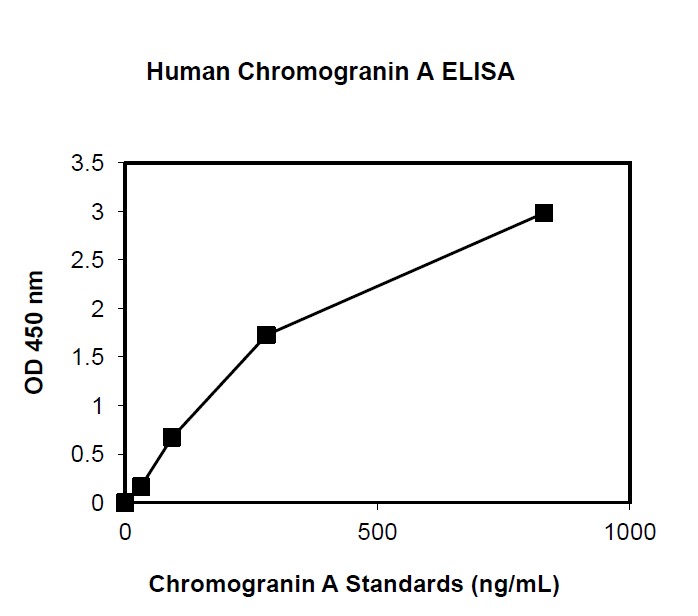Background
The EDI™ Human Chromogranin A Chemiluminescence Immunoassay (CLIA) kit is designed, developed, and produced for the quantitative measurement of human CgA level in serum samples. The assay utilizes a two-site “sandwich” technique with two antibodies that bind to different epitopes of CgA. Assay calibrators, controls, or patient serum samples are added directly to a reaction vessel together with streptavidin coated magnetic particles and biotinylated anti-CgA polyclonal antibody. After an incubation period, a wash step is introduced and an acridinium ester conjugated anti-CgA monoclonal antibody is added to each reaction vessel. The magnetic particles capture the biotin antibody as well as an immuno complex in the form of “magnetic particles–biotin CgA antibody–CgA–acridinium ester CgA antibody”. Materials bound to the solid beads are held in a magnetic field while unbound materials are washed away. Then, trigger solutions are added to the reaction vessel and light emission is measured with the ECL100 or ECL25 analyzer. The relative light units (RLU) are proportional to the concentration of a CgA in the sample. The amount of analyte in the sample is determined from a built-in multi-point calibration curve and reported in serum CgA concentration.

